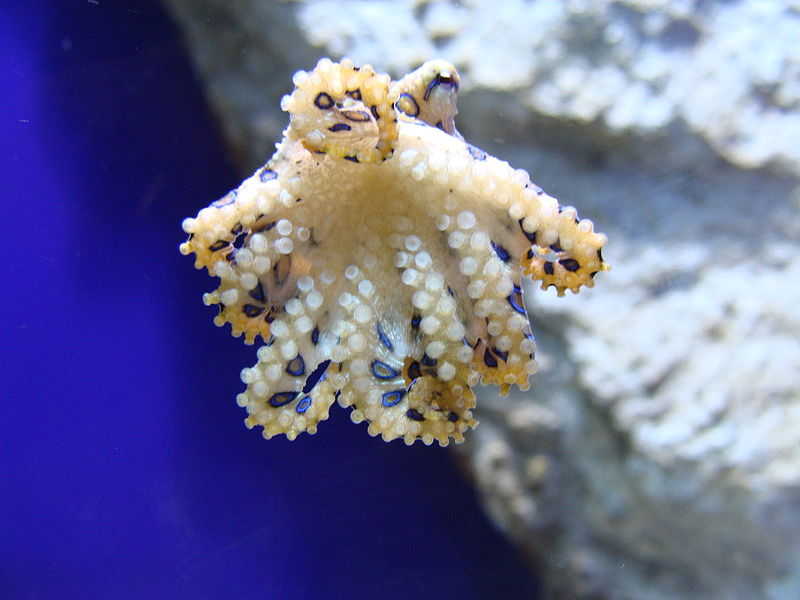Reproduction
Octopuses reproduce in a way very different from the way humans or plants, such as peppermint, reproduce. Male octopuses don't possess a penis, but rather a structure identified as a hectocotylus. The hectocotylus in the Hapalochlaena lunulata is specifically the third right arm. This structure is inserted into the mantle of a female for reproduction.
 In
contrast to some other organisms, there is no distinct difference between
the male and female greater blue-ringed octopuses. For this reason,
it's not hard to understand that some males mistakenly insert their hectocotylus into the mantle of another male! An experiment done by
Mary Cheng and Roy Caldwell showed that even in the case of male-on-male
copulation, the act itself was very short-lived. The interaction
between males and females was understandably longer, lasting an average of
160 minutes and 30 seconds. They learned that the males didn't usually
take the time to differentiate between other males and females before
inserting their hectocotylus. While males typically initiate the
intercourse, females typically terminate it. There is a struggle
between the two animals where the female actually shoves the male off of her
to expel his hectocotylus from her mantle.
In
contrast to some other organisms, there is no distinct difference between
the male and female greater blue-ringed octopuses. For this reason,
it's not hard to understand that some males mistakenly insert their hectocotylus into the mantle of another male! An experiment done by
Mary Cheng and Roy Caldwell showed that even in the case of male-on-male
copulation, the act itself was very short-lived. The interaction
between males and females was understandably longer, lasting an average of
160 minutes and 30 seconds. They learned that the males didn't usually
take the time to differentiate between other males and females before
inserting their hectocotylus. While males typically initiate the
intercourse, females typically terminate it. There is a struggle
between the two animals where the female actually shoves the male off of her
to expel his hectocotylus from her mantle.
Another interesting fact that they discovered over the course of their research was that the octopuses weren't concerned with having an audience while they were copulating. The greater blue-ringed octopuses also appeared to be devoid of all pre-coital contact. Female octopuses would sometimes attack the male after fornication had ceased. Other times, the "couple" would try for Round 2 of intercourse.
After the act is complete, the female begins to lay nearly 100 eggs. She guards these eggs for approximately 50 days until the eggs hatch. The greater blue-ringed octopus females actually cease food consumption during the time that they are protecting their eggs and therefore die soon after releasing the eggs. Whatever offspring survive will be able to successfully reproduce after an approximate four-month time period.
Continue to Interactions